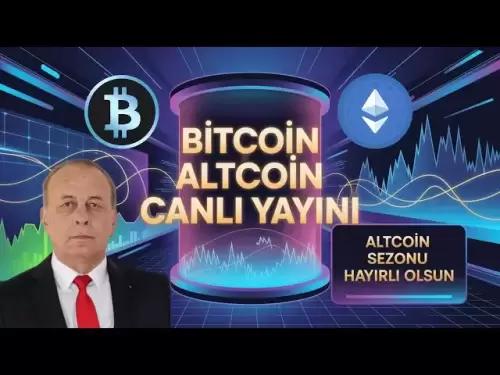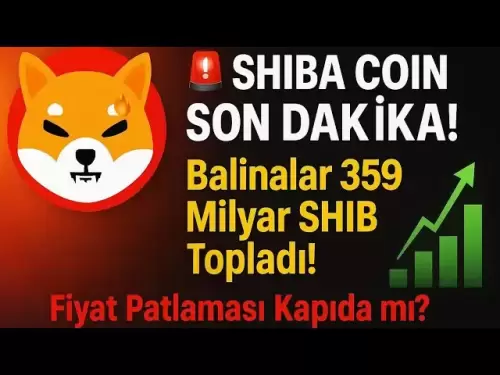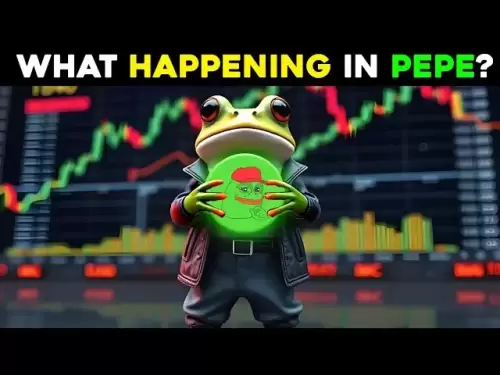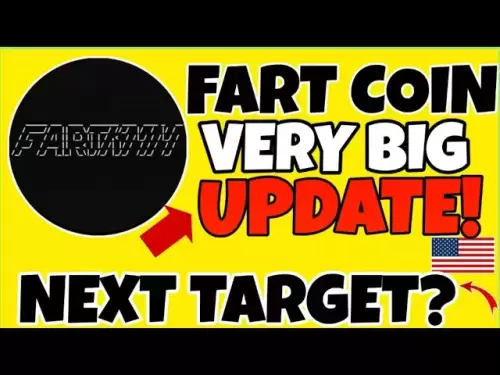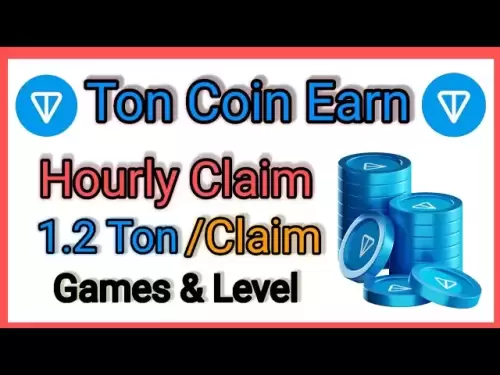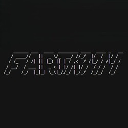-
 Bitcoin
Bitcoin $119900
0.94% -
 Ethereum
Ethereum $4633
9.35% -
 XRP
XRP $3.254
3.60% -
 Tether USDt
Tether USDt $0.9998
-0.04% -
 BNB
BNB $837.0
3.48% -
 Solana
Solana $194.3
10.87% -
 USDC
USDC $0.9998
-0.02% -
 Dogecoin
Dogecoin $0.2370
5.91% -
 TRON
TRON $0.3528
1.79% -
 Cardano
Cardano $0.8460
9.05% -
 Chainlink
Chainlink $23.61
12.06% -
 Hyperliquid
Hyperliquid $44.91
3.99% -
 Stellar
Stellar $0.4475
2.93% -
 Sui
Sui $3.899
5.78% -
 Bitcoin Cash
Bitcoin Cash $620.7
6.74% -
 Hedera
Hedera $0.2602
4.59% -
 Ethena USDe
Ethena USDe $1.000
-0.03% -
 Avalanche
Avalanche $24.84
8.52% -
 Litecoin
Litecoin $131.0
9.17% -
 Toncoin
Toncoin $3.509
3.47% -
 UNUS SED LEO
UNUS SED LEO $9.170
2.15% -
 Shiba Inu
Shiba Inu $0.00001360
4.82% -
 Uniswap
Uniswap $11.66
5.28% -
 Polkadot
Polkadot $4.180
7.93% -
 Ethena
Ethena $0.8242
2.31% -
 Dai
Dai $0.9998
-0.04% -
 Cronos
Cronos $0.1630
-3.04% -
 Pepe
Pepe $0.00001224
9.07% -
 Bitget Token
Bitget Token $4.464
1.16% -
 Aave
Aave $321.9
9.17%
Where can you buy and sell NFTs?
Popular NFT marketplaces like OpenSea, Blur, and Magic Eden enable users to buy, sell, and trade digital assets across blockchains such as Ethereum and Solana.
Aug 12, 2025 at 09:42 pm

Popular NFT Marketplaces for Buying and Selling Digital Assets
When exploring where to buy and sell NFTs, the most common starting point is visiting dedicated NFT marketplaces. These platforms serve as digital marketplaces where creators mint and list their NFTs, while collectors and investors browse, bid, or purchase them. Among the most widely used platforms is OpenSea, which operates on the Ethereum blockchain and supports multiple standards like ERC-721 and ERC-1155. OpenSea allows users to buy, sell, and auction NFTs across categories such as art, domain names, virtual worlds, and collectibles. To begin, users must connect a Web3 wallet like MetaMask or Coinbase Wallet to authenticate transactions and manage ownership.
Another major platform is Blur, designed specifically for professional NFT traders. Blur offers advanced trading tools, real-time data analytics, and zero gas fees for certain activities. Its interface prioritizes speed and efficiency, making it ideal for high-volume trading. Rarible is another decentralized marketplace that supports Ethereum, Polygon, and Tezos, enabling users to create (mint) NFTs without needing coding skills. Rarible also features a governance token (RARI) that allows holders to vote on platform upgrades.
Blockchain-Specific Platforms and Their Unique Features
Different blockchains host their own NFT marketplaces, each with unique advantages. For instance, Solana-based NFTs are traded primarily on Magic Eden, which dominates the Solana NFT space. Magic Eden provides low transaction fees and fast confirmation times due to Solana’s high throughput. Users must connect a Solana-compatible wallet such as Phantom or Solflare to interact with the marketplace. The platform supports instant listings, auctions, and even allows creators to launch new NFT collections through its launchpad.
On the Polygon network, Quickswap’s NFT section and OpenSea (with Polygon support) offer eco-friendly alternatives to Ethereum due to lower gas costs. Polygon is an Ethereum Layer 2 solution, so NFTs here are compatible with Ethereum wallets but benefit from reduced fees. For BNB Chain users, Binance NFT Marketplace is a major destination. Operated by the Binance exchange, it supports both beginner and advanced users with options for fixed-price sales, auctions, and mystery box drops. Users can access it directly through their Binance account or link a compatible wallet.
How to Set Up a Wallet for NFT Transactions
Before buying or selling NFTs, setting up a digital wallet is essential. The process varies slightly depending on the blockchain but follows a consistent pattern. For Ethereum-based platforms:
- Download and install a Web3 wallet such as MetaMask
- Create a new wallet and securely store the 12-word recovery phrase
- Switch the network to Ethereum Mainnet (or add Polygon/BNB Chain manually if needed)
- Fund the wallet with ETH or the required cryptocurrency via a centralized exchange
- Visit the NFT marketplace and click “Connect Wallet” to link your account
For Solana:
- Install Phantom Wallet from the official website
- Generate a new wallet and back up the secret recovery phrase
- Switch to the mainnet-beta network
- Purchase SOL tokens and transfer them to your Phantom wallet address
- Connect Phantom to Magic Eden or Tensor by selecting “Connect Wallet” on the site
Always ensure URLs are correct to avoid phishing scams. Never share your recovery phrase with anyone.
Step-by-Step Guide to Buying an NFT
Purchasing an NFT involves several critical steps to ensure a secure transaction. Once your wallet is set up and funded:
- Navigate to the NFT marketplace of your choice (e.g., OpenSea)
- Use the search or browse categories to find the desired NFT
- Click on the NFT listing to view details such as price, owner, blockchain, and traits
- Confirm the listed price is in the correct cryptocurrency (e.g., ETH, SOL, BNB)
- Click “Buy Now” or place a bid if it’s an auction
- Review the transaction details in your wallet, including gas fees
- Approve the transaction in your wallet extension or app
- Wait for blockchain confirmation, which may take seconds to minutes depending on network congestion
After confirmation, the NFT will appear in your wallet’s collectibles tab or within the marketplace’s collection section. Some platforms require manual claiming or transferring to view the asset.
How to Sell Your NFT: Listing and Pricing Strategies
Selling an NFT begins with ensuring it’s in your connected wallet. To list it for sale:
- Go to the marketplace where you want to list (e.g., OpenSea)
- Click “My Collections” or “Profile” and select the NFT you own
- Choose “Sell” or “List for Sale”
- Select the sale type: fixed price, timed auction, or highest bid
- Enter the price in the supported cryptocurrency
- Set the duration of the listing (e.g., 1 day, 3 days, forever)
- Decide whether to accept offers from buyers
- Review all fees, including platform and royalty fees
- Confirm the listing in your wallet
Once listed, the NFT becomes visible to buyers. If someone purchases it, the funds are automatically sent to your wallet, minus any applicable fees. Some platforms allow bundle listings, where multiple NFTs are sold together. Always double-check the blockchain network and wallet address to prevent errors.
Specialized and Niche NFT Marketplaces
Beyond general platforms, niche marketplaces cater to specific interests. Foundation focuses on digital art and requires artist invitations, creating a curated environment. KnownOrigin emphasizes verified artists and sustainable practices on Ethereum. For gaming and metaverse assets, Decentraland’s Marketplace allows users to buy virtual land and wearables using MANA tokens. The Sandbox offers similar virtual real estate and in-game items, with transactions conducted in SAND.
Music lovers can explore Sound.xyz, where artists release limited edition tracks as NFTs. Audius combines streaming with NFT integrations for fan engagement. Collectors of sports memorabilia use NBA Top Shot, which sells officially licensed basketball highlight clips as NFTs on the Flow blockchain. Each platform has its own wallet requirements and onboarding process, so research is crucial before engaging.
Frequently Asked Questions
Can I buy NFTs with a credit card?
Yes, some platforms like Mintable and Nifty Gateway allow credit card purchases. These services handle the cryptocurrency conversion automatically, so users don’t need a wallet initially. However, transferring the NFT to a personal wallet afterward is recommended for full ownership control.
What happens if I lose my wallet seed phrase after buying an NFT?
Losing your seed phrase means losing access to your wallet and all assets inside, including NFTs. There is no recovery option on decentralized platforms. Always store your recovery phrase offline in a secure location, such as a hardware vault or encrypted storage.
Are there fees when selling NFTs on these platforms?
Yes, most platforms charge a transaction fee (e.g., 2.5% on OpenSea) and may deduct gas fees for blockchain validation. Creators often set royalty fees (e.g., 5–10%) that are paid on every secondary sale. These are automatically collected by the marketplace.
Can I sell an NFT purchased on one marketplace on another?
Yes, as long as both marketplaces support the same blockchain. For example, an NFT bought on OpenSea using Ethereum can be sold on LooksRare or X2Y2 without issues. Ensure your wallet is connected to the new platform and the NFT is visible in your collection.
Disclaimer:info@kdj.com
The information provided is not trading advice. kdj.com does not assume any responsibility for any investments made based on the information provided in this article. Cryptocurrencies are highly volatile and it is highly recommended that you invest with caution after thorough research!
If you believe that the content used on this website infringes your copyright, please contact us immediately (info@kdj.com) and we will delete it promptly.
- Ethereum, BitMine, and the ETH Price Surge: What's Driving the Bull Run?
- 2025-08-13 09:10:12
- Perplexity AI, XRP, and Crypto Prices: What's the Buzz?
- 2025-08-13 09:10:12
- Circle's Arc Blockchain: A New Dawn for Stablecoin Finance in the NYC Hustle
- 2025-08-13 09:15:21
- KuCoin, DigiFT, and UBS uMINT: Bridging Traditional Finance and Digital Assets
- 2025-08-13 09:15:21
- Ethereum, Altcoins, and the Crypto Upcycle: A New Yorker's Take
- 2025-08-13 09:30:12
- Ethereum, GRT, and Triangle Breakouts: What's the Haps?
- 2025-08-13 09:35:12
Related knowledge
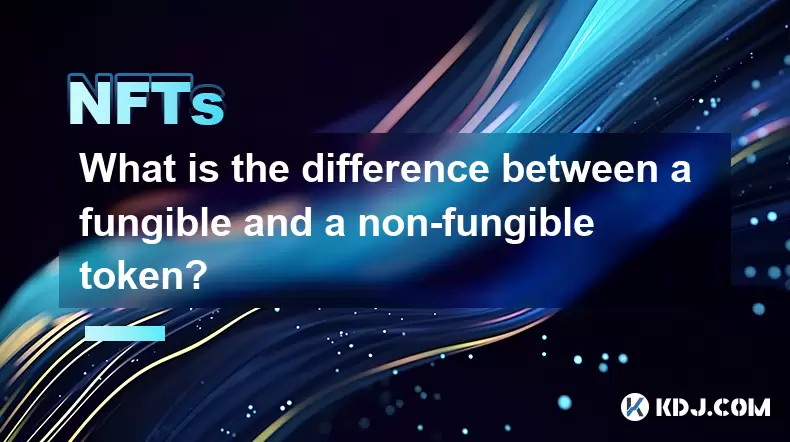
What is the difference between a fungible and a non-fungible token?
Aug 11,2025 at 12:07pm
Understanding Fungibility in Digital AssetsThe concept of fungibility is foundational to understanding both fungible and non-fungible tokens (NFTs) in...
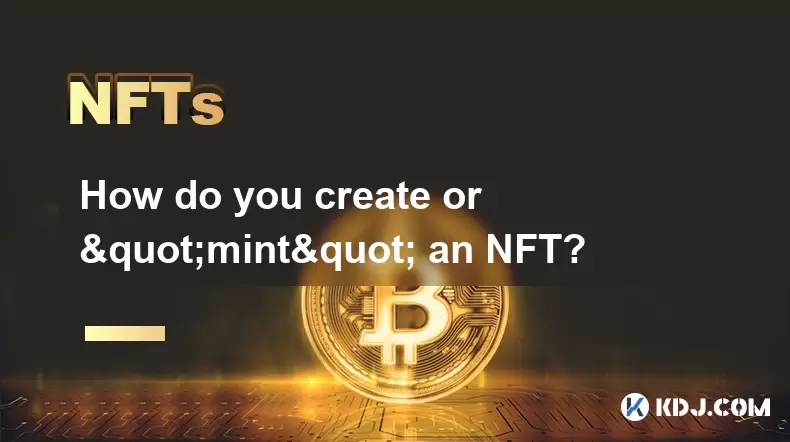
How do you create or "mint" an NFT?
Aug 09,2025 at 08:56pm
Understanding What an NFT Is Before MintingBefore diving into the process of creating an NFT, it's essential to understand what an NFT actually is. An...
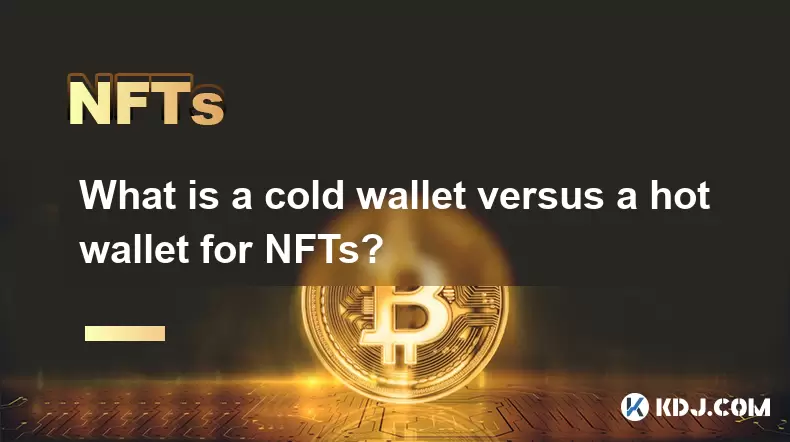
What is a cold wallet versus a hot wallet for NFTs?
Aug 10,2025 at 10:49pm
Understanding Cold Wallets and Hot Wallets in the NFT EcosystemIn the world of NFTs (Non-Fungible Tokens), digital ownership and security are paramoun...

How do I protect my NFTs from being stolen?
Aug 11,2025 at 06:28pm
Understanding the Risks to NFT OwnershipNFTs, or non-fungible tokens, represent unique digital assets secured on blockchain networks. Despite their cr...
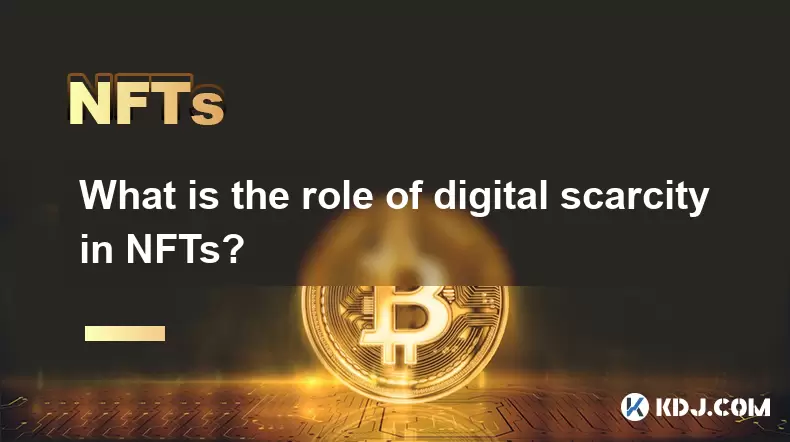
What is the role of digital scarcity in NFTs?
Aug 11,2025 at 11:36pm
Understanding Digital Scarcity in the Context of NFTsDigital scarcity refers to the deliberate limitation of digital assets to create value through ra...
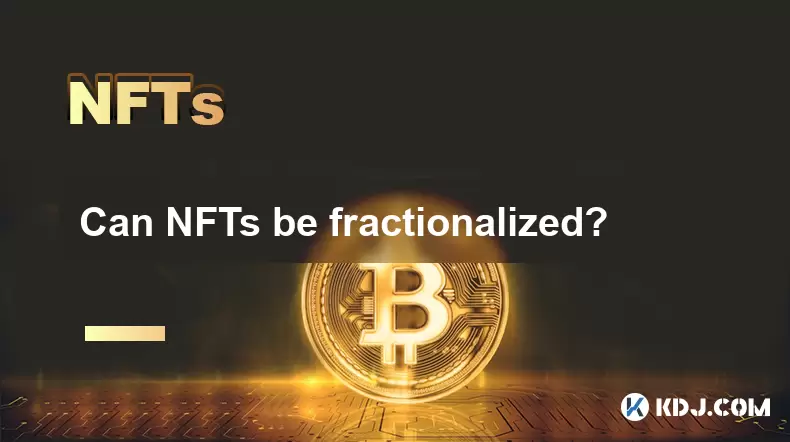
Can NFTs be fractionalized?
Aug 11,2025 at 12:07am
Understanding NFT FractionalizationNFT fractionalization refers to the process of dividing a single non-fungible token into multiple smaller, fungible...

What is the difference between a fungible and a non-fungible token?
Aug 11,2025 at 12:07pm
Understanding Fungibility in Digital AssetsThe concept of fungibility is foundational to understanding both fungible and non-fungible tokens (NFTs) in...

How do you create or "mint" an NFT?
Aug 09,2025 at 08:56pm
Understanding What an NFT Is Before MintingBefore diving into the process of creating an NFT, it's essential to understand what an NFT actually is. An...

What is a cold wallet versus a hot wallet for NFTs?
Aug 10,2025 at 10:49pm
Understanding Cold Wallets and Hot Wallets in the NFT EcosystemIn the world of NFTs (Non-Fungible Tokens), digital ownership and security are paramoun...

How do I protect my NFTs from being stolen?
Aug 11,2025 at 06:28pm
Understanding the Risks to NFT OwnershipNFTs, or non-fungible tokens, represent unique digital assets secured on blockchain networks. Despite their cr...

What is the role of digital scarcity in NFTs?
Aug 11,2025 at 11:36pm
Understanding Digital Scarcity in the Context of NFTsDigital scarcity refers to the deliberate limitation of digital assets to create value through ra...

Can NFTs be fractionalized?
Aug 11,2025 at 12:07am
Understanding NFT FractionalizationNFT fractionalization refers to the process of dividing a single non-fungible token into multiple smaller, fungible...
See all articles





















